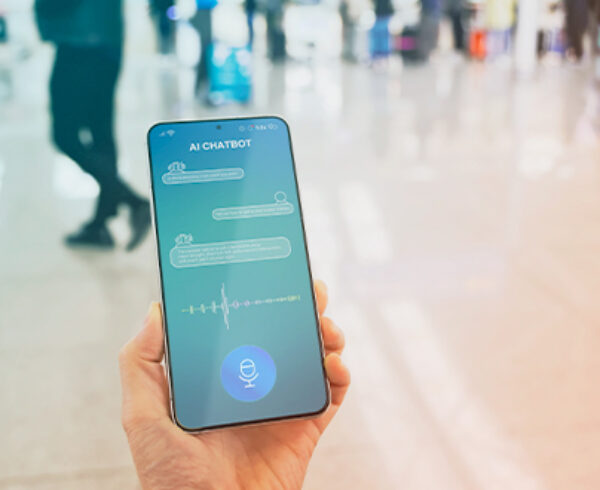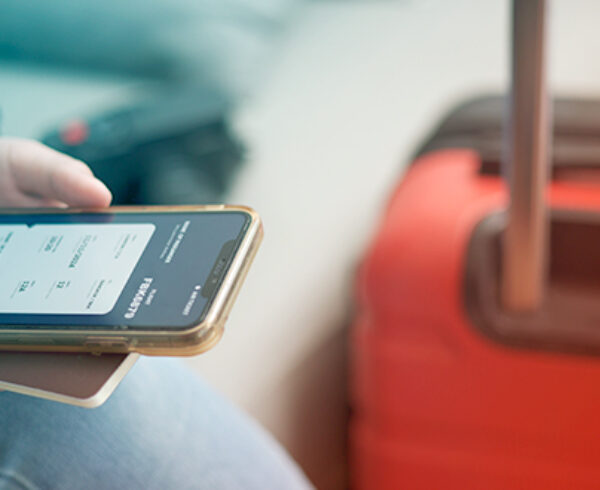As a Travel Manager or Arranger, you likely already know that air sales in the NDC era are an entirely new ballgame. While NDC should mean easier booking and better Traveler experiences, wider adoption has shown that NDC isn’t flawless.
Here’s the latest on navigating air sales in the NDC era. Plus, get a quick recap of NDC vs. GDS and how the two differ.

NDC Overview
If you’re still wrapping your head around all things NDC and how air sales in the NDC era will change, here’s what you need to know.
Firstly, NDC stands for “New Distribution Capability.” It’s an International Air Transport Association initiative that’s been in the works since the early 2010s. However, it’s just received more media attention as of late due to broader adoption and rollout.
NDC is designed to provide more transparency when booking travel. It’s also designed to provide more individualized travel shopping experiences. The idea is that, eventually, NDC will replace the existing GDS systems.
NDC offers several perks that GDS systems do not. These often include lower fares, fewer surcharges, personalized pricing, add-on and amenity booking, access to low-cost carriers and more.
NDC is taking a while to gain traction, though, despite recent attention. In 2022, according to OAG, only about 10% of indirect air sales were made through NDC. This was a 4–5% increase since 2021. What are the reasons for this slow adoption? They’re mirrored in the industry input reported below, but OAG points to various technical and human challenges holding NDC back. These include a lack of standardization, loyalty to legacy systems, and the need for training, among others.
Recent Industry Input
As of early 2023, most Travel Managers had not made the switch to booking through NDC, according to a Global Business Travel Association survey. However, more recent reports from Travel Managers in the fall of 2023 show that, for those who have made the switch to NDC booking, challenges are plentiful.
A TravelAge West article discovered that some travel advisors find air sales in the NDC era to be overly complicated. Adding NDC to the mix of tools that travel advisors already use can be frustrating. Learning a new system is extra homework that no one asked for.
Additionally, when those advisors need tech help, they’re finding they need to rely on the individual airline for assistance. This is less than ideal. On top of this, some find stipulations regarding fares that weren’t in place previously in the pre-NDC days. These stipulations make cancelations and rebooking difficult.
Are these all just necessary side effects of implementing new technology?
Side effects that will be alleviated as time goes on? Possibly.
The same TravelAge West article noted that some industry experts are taking a slow approach to NDC. They’re waiting to see how it might play out before jumping on board. Others say that all of the above problems are just symptoms of NDC being rolled out too quickly. The rollout occurred before it was ready for Travel Managers and before Travel Managers were ready for it.
Still, some airlines who find NDC bookings to be more profitable are trying to inspire Travel Managers and similar professionals to hurry up and join the party. In the spring, American Airlines moved a substantial number of its fares to NDC channels. The carrier made them no longer available via GDS systems. Some airlines, as TravelAge West reported, are now charging customers extra for using GDS systems.
A range of airlines are highly pro-NDC. Beyond American Airlines, early adopters have included British Airways, Lufthansa Group, Qantas and Finnair (via OAG). British Airways offers capabilities such as real-time seat selection via NDC. It also added new price classes to NDC channels, allowing increased price points. Lufthansa has used NDC to offer Travel Managers the ability to book fares that were previously not an option, such as an economy light fare. Similarly, Qantas uses NDC to allow Travelers to book add-on amenities and perks that were previously unavailable, such as lounge access or in-flight meals.
While TravelAge West spoke with several industry experts who claimed that, when it comes to NDC, airlines were still on the side of Travel Managers, other industry experts held differing opinions, as can be seen in a recent article from Business Travel News Europe. One even called airlines and their customers “dramatically opposed,” with airlines not properly catering to business travel needs and demands.
How Do You Navigate Air Sales in the NDC Era?
On the surface, NDC seems promising. It can potentially provide more overall options to Travel Managers and help Travel Managers find the best options for clients more easily. However, for the time being, it’s like any new solution or tool. It requires time, patience and fine-tuning to get the most from it.
As you attempt to make air sales in the NDC era, rely on existing partnerships for help navigating NDC, as well as airlines that make the booking process as easy as possible. Invest time in learning NDC and recognize it for what it is: likely the next step in air sales within Travel Management. Keep the positives in mind, too. With NDC, you’ll very likely be able to book more travel and more travel services than you would have in the past. You’ll also be able to offer Travelers an improved customer experience, with bookings tailored to their individual needs and more travel booking options that fall within the confines of most organizations’ travel policies. In the ideal world, you’ll also be able to enjoy better rates and work around surcharges.
JTB Business Travel can help you navigate air sales in the NDC era. As a leading Travel Management Company, we’re ready for NDC and the changes, challenges and opportunities it brings to the business travel landscape. Let us be your Travel Management partner, as you take on the evolving world of business travel.













